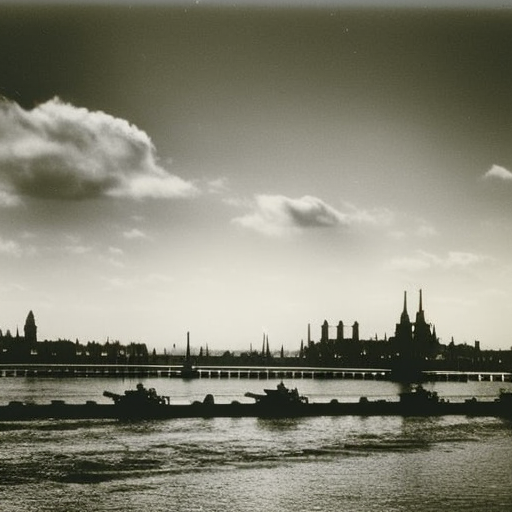The Prussian Invasion of the Netherlands
In 1787, Prussia launched a military invasion of the Netherlands, marking a significant event in European history. The invasion was prompted by the political turmoil and unrest that had engulfed the Dutch Republic, as well as the growing influence of the French Revolution. This invasion, known as the Prussian Intervention, aimed to restore the power of the Orangist faction and suppress the republican movement in the Netherlands.
Background:
The Dutch Republic, a confederation of seven provinces, had been experiencing political instability and economic decline for several decades. The republican movement, inspired by the ideals of the French Revolution, gained momentum in the late 18th century, advocating for a more democratic and egalitarian society. However, this movement faced strong opposition from the Orangists, who supported the House of Orange and favored a more conservative and aristocratic rule.
The French Revolution:
The outbreak of the French Revolution in 1789 had a profound impact on the political landscape of Europe. The revolutionary ideas of liberty, equality, and fraternity spread across the continent, inspiring various nationalist and republican movements. In the Netherlands, the French Revolution served as a catalyst for the republican movement, leading to increased tensions between the republicans and the Orangists.
The Batavian Revolution:
In 1795, the republican forces in the Netherlands, supported by French troops, overthrew the Orangist regime and established the Batavian Republic. This marked the end of the Dutch Republic and the beginning of a new era. However, the Batavian Republic faced numerous challenges, including economic instability, political divisions, and external threats.
Prussian Intervention:
In 1787, the Orangists, fearing the rise of the republican movement, sought assistance from Prussia. King Frederick William II of Prussia, who was sympathetic to the Orangists, saw an opportunity to assert Prussian influence in the region and agreed to intervene militarily. In September 1787, Prussian troops crossed the Dutch border and quickly advanced towards Amsterdam.
Suppression of the Republicans:
The Prussian invasion was met with little resistance from the republican forces, who were ill-prepared and lacked sufficient military strength. The Prussian troops, under the command of the Duke of Brunswick, swiftly occupied key cities and suppressed any opposition. The republican leaders were arrested, and the Batavian Republic was dissolved.
Restoration of Orangist Rule:
Following the successful invasion, the Orangists regained control of the Netherlands. William V of Orange, who had fled to England during the republican uprising, returned and resumed his position as stadtholder. The Orangists, with the support of Prussia, implemented a series of measures to consolidate their power and suppress any remaining republican sentiment.
Legacy:
The Prussian invasion of the Netherlands had a lasting impact on the political landscape of the region. It marked the end of the Dutch Republic and the restoration of Orangist rule. The invasion also highlighted the vulnerability of the republican movement in the face of external intervention. The events in the Netherlands were closely watched by other European powers, who were concerned about the spread of revolutionary ideas and the potential destabilization of their own regimes.
In conclusion, the Prussian invasion of the Netherlands in 1787 was a significant event that shaped the political trajectory of the region. The invasion aimed to suppress the republican movement and restore the power of the Orangists. The successful intervention by Prussia led to the dissolution of the Batavian Republic and the restoration of Orangist rule. The events in the Netherlands served as a cautionary tale for other European powers, highlighting the challenges faced by republican movements in the face of external intervention.












